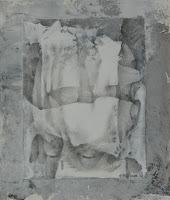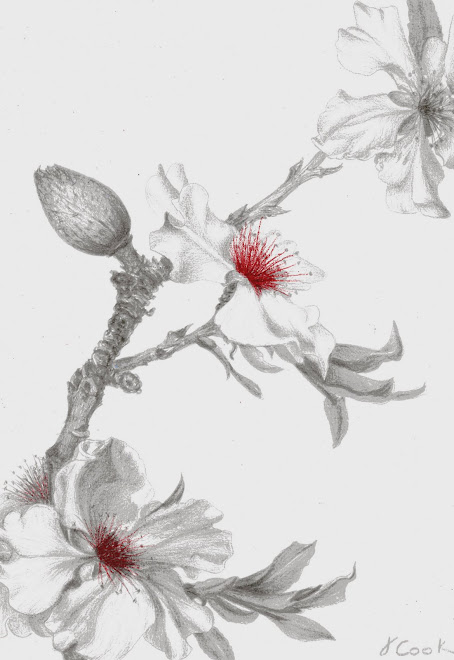
When does silverpoint cease to be silverpoint? by Gerrit Verstraete
The question of integrity in the use of silverpoint is a valid question. Silverpoint essentially remains a drawing medium with as its primary means of expression, the line. Second to the line is silverpoint’s ability to lay down delicate tonal values through meticulous cross hatching. This is especially useful in the rendering of figurative work. The art form known as silverpoint involves a discipline of drawing with a silver stylus in point form across a piece of paper or board covered with the appropriate ground. But, I have also created a metallic surface effect by rendering the ground with the flat edge of pieces of metal such as a thick silver ring or copper pipe, as a background for actual silverpoint drawing. When artists use silverpoint in a “non-point” or non-linear fashion, such as the effect of a metallic surface described above, it ceases to be silverpoint. One may call it silver work or silver technique or metallic rendering, but silverpoint it is not ( unless it is only part of an actual silverpoint drawing ). This is not a value claim but simply a way to avoid confusion between silverpoint and silver rendering. Both are valuable as a technique. Needless to say, an artist is at liberty to employ either silverpoint or metallic rendering or use them together in the same work. Some artists choose to use a lot of other media together with silverpoint. When silverpoint and metallic rendering are reduced to simply being a part of some abstract or expressionist work of art, a part often obscured by colors, textures and values of other media, one may ask, “is it silverpoint?” Good art nevertheless, but the integrity of silverpoint may be lost in the overall effect. The attached drawing used both silver rendering and silverpoint. For a larger version scroll down to the bottom of the blog.
The question of integrity in the use of silverpoint is a valid question. Silverpoint essentially remains a drawing medium with as its primary means of expression, the line. Second to the line is silverpoint’s ability to lay down delicate tonal values through meticulous cross hatching. This is especially useful in the rendering of figurative work. The art form known as silverpoint involves a discipline of drawing with a silver stylus in point form across a piece of paper or board covered with the appropriate ground. But, I have also created a metallic surface effect by rendering the ground with the flat edge of pieces of metal such as a thick silver ring or copper pipe, as a background for actual silverpoint drawing. When artists use silverpoint in a “non-point” or non-linear fashion, such as the effect of a metallic surface described above, it ceases to be silverpoint. One may call it silver work or silver technique or metallic rendering, but silverpoint it is not ( unless it is only part of an actual silverpoint drawing ). This is not a value claim but simply a way to avoid confusion between silverpoint and silver rendering. Both are valuable as a technique. Needless to say, an artist is at liberty to employ either silverpoint or metallic rendering or use them together in the same work. Some artists choose to use a lot of other media together with silverpoint. When silverpoint and metallic rendering are reduced to simply being a part of some abstract or expressionist work of art, a part often obscured by colors, textures and values of other media, one may ask, “is it silverpoint?” Good art nevertheless, but the integrity of silverpoint may be lost in the overall effect. The attached drawing used both silver rendering and silverpoint. For a larger version scroll down to the bottom of the blog.








